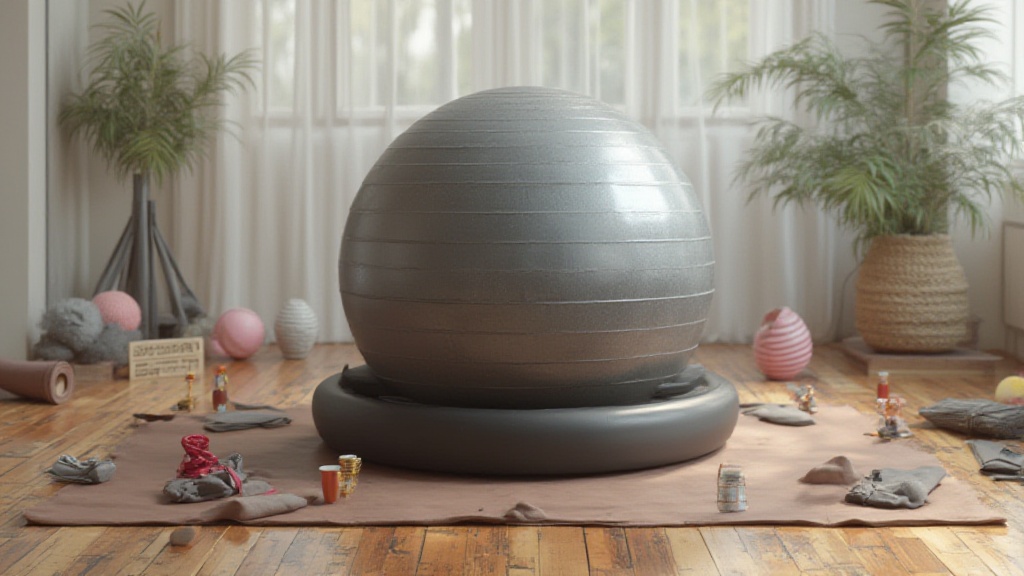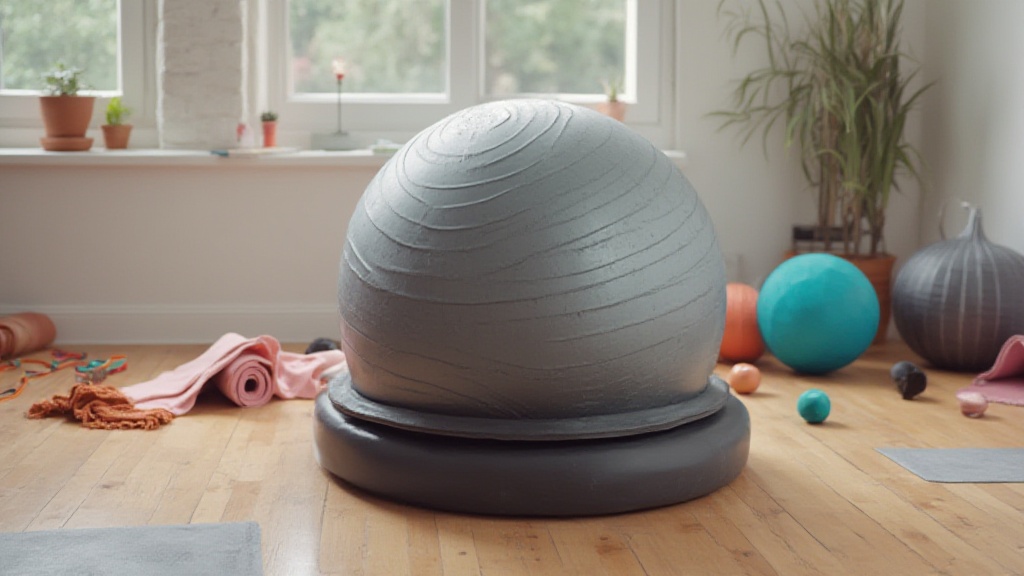
Achieving optimal stability relies heavily on core strength training, which is essential for maintaining balance in both athletic performance and daily activities. Core exercises effectively engage important muscle groups, including the abdominal muscles and lower back, establishing a strong foundation that supports good posture and various movement patterns.
A robust core enhances body alignment, simplifying the execution of dynamic exercises safely.
Incorporating resistance exercises such as planks and bridges into your routine not only improves strength but also promotes injury prevention by increasing overall stability.
Building a solid core remains fundamental to mastering diverse physical challenges effectively.
Benefits Of Core Strength Training
Enhancing overall fitness begins with recognizing the substantial advantages of core strength training for functional movement. Improved coordination results from targeted core workouts that engage critical muscle groups, such as the abdominal muscles and hips, ultimately leading to elevated athletic performance.
Athletes experience increased power transfer, which facilitates precise execution of sports-specific movements. For routine activities, strengthening the core leads to enhanced stability when lifting objects and maintaining correct posture.
Integrating Core Exercises
To seamlessly integrate core exercises into daily routines, consider scheduling brief sessions that involve bodyweight exercises, like Russian twists or basic planks.
This approach ensures consistency and sustainability in workouts, ultimately supporting your overall fitness journey.

How Does Core Stability Improve Posture
Core stability significantly enhances posture by promoting optimal spinal alignment. Engaging core muscles effectively provides essential support to the spine, which reduces the risk of misalignment.
Improved spinal alignment becomes noticeable as the body maintains a more upright position, and this adjustment can alleviate discomfort and fatigue linked to poor posture.
Specific stretches, such as the Cat-Cow Stretch and Child’s Pose, alongside core-strengthening exercises like planks and bridges, contribute to developing endurance and flexibility.
These practices ultimately foster better posture while reducing physical strain on the body.
The Connection Between Core Stability and Spinal Alignment
Core stability relates directly to spinal alignment; when involving the abdominal muscles and pelvic floor, the core facilitates proper body alignment. Exercises that enhance core stability often lead to improved balance and coordination, which plays an essential role in maintaining upright posture.
When the core is strong, it enables individuals to engage in dynamic activities, thus promoting overall fitness and reducing the likelihood of injury.
Exercises for Maintaining Good Posture
To maintain good posture, incorporating specific stretches and exercises into your routine is important. For example, performing dynamic exercises like Russian twists can enhance torso strength, promoting spinal stability.
Static exercises that focus on muscle engagement contribute to endurance and flexibility.
Regularly practicing these techniques helps sustain optimal body alignment throughout daily activities.
Effective Exercises For Lower Back Strength
Building lower back strength is fundamental for overall fitness and injury prevention.
A few key exercises effectively target this area: deadlifts, which engage the entire posterior chain, and Supermans, which specifically enhance lower back endurance. Incorporating these movements into your workout routine improves athletic performance and supports daily activities by ensuring a stable foundation.
For beginners, focusing on form over weight is essential; this approach helps avoid strain and promotes safe execution of each exercise during training.
Key Exercises for Injury Prevention
Exercises targeting lower back strength are vital for preventing injuries. Bodyweight exercises, such as planks, not only strengthen the lower back but also enhance core stability.
Utilizing tools like resistance bands during workouts can optimize resistance training.
Prioritizing safety through proper technique will enhance performance and support long-term development.
Core Stability and Posture
- Core stability is linked to improved spinal alignment, reducing the risk of misalignment.
- Engaging core muscles enhances balance and coordination, essential for maintaining an upright posture.
- Dynamic exercises like Russian twists strengthen the torso, promoting spinal stability.
- Bodyweight exercises, such as planks, strengthen the lower back and improve core stability.
Understanding The Role Of Abdominal Muscles
The abdominal muscles serve as essential components of core strength training, providing support for both athletic performance and injury prevention. The rectus abdominis primarily contributes to flexing the spine while stabilizing the pelvis during various movements.
Obliques, both internal and external, play a significant role in rotational movements and lateral stability, allowing for a full range of motion.
The transverse abdominis acts as a stabilizer for the core, reducing the risk of injury during physical activities.
For instance, incorporating bodyweight exercises like planks into your workouts effectively targets these muscles, enhancing overall strength and stability.
The Benefits of Strong Abdominal Muscles
Strong abdominal muscles improve posture and contribute to better movement patterns, ensuring effective force transfer during athletic activities. Enhanced torso strength supports the lower back, vital for maintaining proper body alignment during various exercises.
The activation of these muscle groups aids in stabilizing the pelvic floor, which is essential for injury prevention and overall functional fitness.
Can Balance Boards Enhance Core Workouts
Balance boards provide unique benefits for enhancing core stability and challenging the abdominal muscles differently than traditional exercises. Engaging with a balance board promotes dynamic stability, as users must activate various muscle groups to maintain balance on an unstable surface.
This training modality significantly improves proprioception and coordination, which are essential for optimal athletic performance.
Beginner-Friendly Balance Board Exercise
A recommended beginner-friendly exercise is the static balance hold.
To perform this, stand on the board for 30 seconds while focusing on maintaining proper posture.
As your stability progresses, gradually increase the holding time to enhance core strength and overall fitness. This exercise not only engages the abdominal muscles but also works on mobility and body awareness, critical for developing effective balance and control.
Abdominal Muscles and Core Training
- Strong abdominal muscles contribute to improved posture and effective movement patterns.
- Engaging the core during exercises reduces the risk of lower back injuries.
- Balance boards enhance dynamic stability and proprioception, crucial for athletic performance.
- Static balance holds on a balance board improve core strength and body awareness.
Techniques For Injury Prevention In Training
Proper form during core training significantly minimizes injury risks. Common mistakes include overextension of the lower back, which can lead to severe muscle strains.
Engaging your core muscles effectively is essential for maintaining balance and stability throughout workouts.
Neglecting this engagement compromises overall workout effectiveness.
Listening to your body is paramount; if discomfort arises, consider adjusting your exercise intensity or technique. Regular assessments of your form can help ensure you maintain proper alignment, ultimately supporting your long-term fitness goals and reducing the likelihood of injuries during training sessions.
Key Considerations for Injury Prevention
- Maintain proper posture during exercises.
- Avoid excessive strain by adjusting workout intensity based on your physical condition.
- Incorporate gradual progression in training to enhance strength and endurance.
- Focus on muscle engagement to stabilize the torso during dynamic movements.
What Is Dynamic Stability In Core Exercises
Dynamic stability refers to the body’s ability to maintain control during movement, especially in unstable conditions. This capability is significant for enhancing overall athletic performance, allowing individuals to execute movements efficiently. Unlike static stability, which involves maintaining balance while stationary, dynamic stability plays a crucial role in various sports, from soccer to gymnastics.
Differences Between Dynamic and Static Stability
Dynamic stability involves control during movement, while static stability focuses on maintaining equilibrium.
Practical Application of Dynamic Stability
One practical example of a dynamic stability exercise is the Single-Leg Deadlift: stand on one leg, hinge forward at the hips, extending the opposite leg behind. This exercise not only improves coordination but also strengthens the core by engaging multiple muscle groups effectively. Incorporating such exercises into your routine can elevate your athletic performance and contribute to better overall fitness.
| Injury Prevention Technique | Importance |
|---|---|
| Proper Posture | Minimizes injury risks during exercises |
| Core Muscle Engagement | Enhances balance and stability |
| Gradual Progression | Builds strength and endurance safely |
| Listening to Your Body | Prevents discomfort and potential injuries |
Incorporating Nutrition For Core Fitness
Nutrition plays a significant role in enhancing core strength, while also facilitating recovery during effective training. A balanced diet that is rich in protein is essential, as it aids in the repair of abdominal muscles and promotes overall muscle engagement.
Foods like lean meats, nuts, legumes, and dairy products deliver the necessary amino acids that foster muscle growth and contribute to injury prevention.
Incorporating a variety of fruits and vegetables is important, as they provide essential vitamins and minerals that support dynamic stability and optimal muscle function.
Key Nutrients for Core Strength
To maximize core fitness, focus on consuming nutrient-dense foods that enhance recovery and support training efforts.
Protein, as previously mentioned, is fundamental for muscle repair after workouts. Additionally, healthy fats found in avocados and fish are beneficial for reducing inflammation, which can hinder progression in strength and overall athletic performance.
Carbohydrates are also vital, as they provide energy necessary for dynamic exercises that engage the core.
Post-Workout Nutrition Tip
A simple yet effective nutrition tip to complement core training is to consume a protein-rich meal within 30 minutes post-workout. This timing is essential for enhancing recovery and maximizing results, thereby allowing for improved strength and performance in subsequent workouts.
Focusing on a combination of protein and carbohydrates after exercising optimizes muscle recovery, ensuring that the body can effectively rebuild and strengthen.
| Nutrient | Benefits |
|---|---|
| Protein | Aids in muscle repair and growth |
| Healthy Fats | Reduces inflammation, supports overall performance |
| Carbohydrates | Provides energy for dynamic core exercises |
| Vitamins and Minerals | Support dynamic stability and optimal muscle function |
